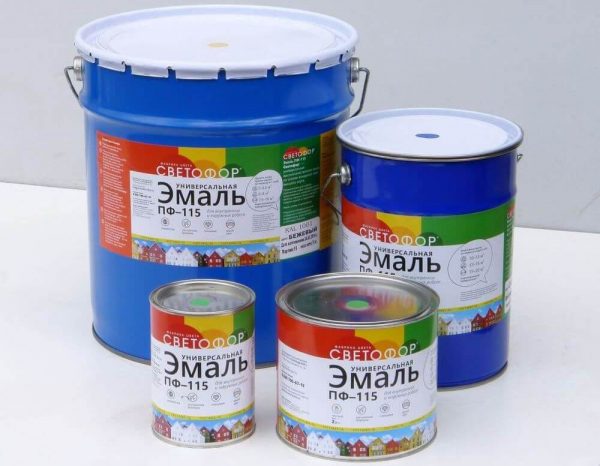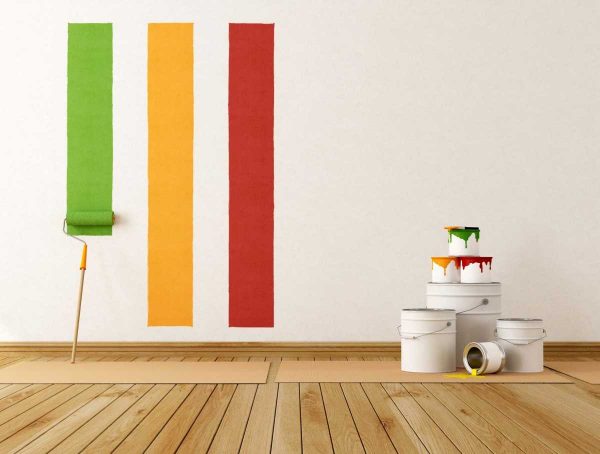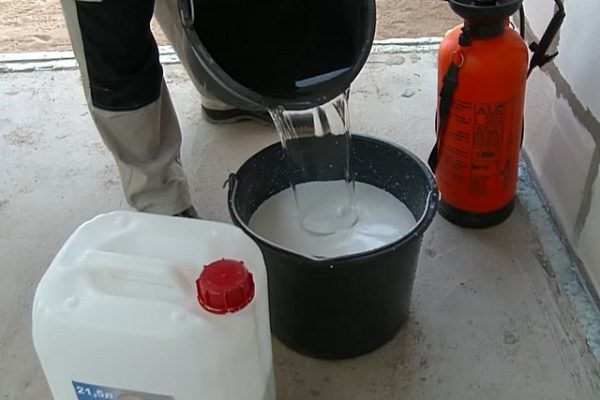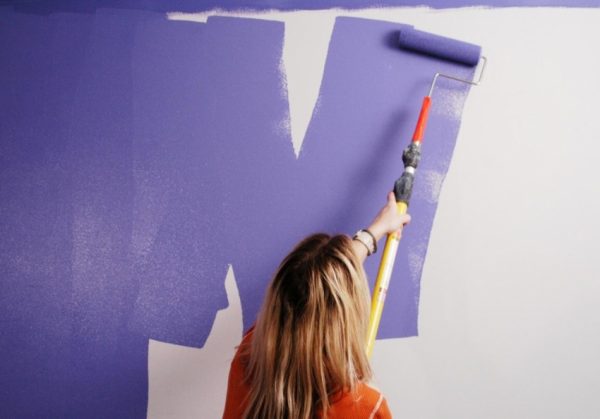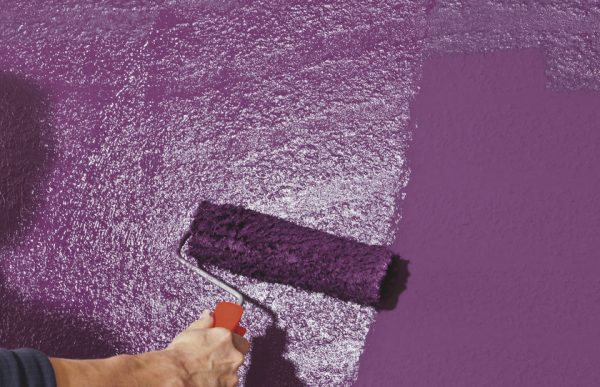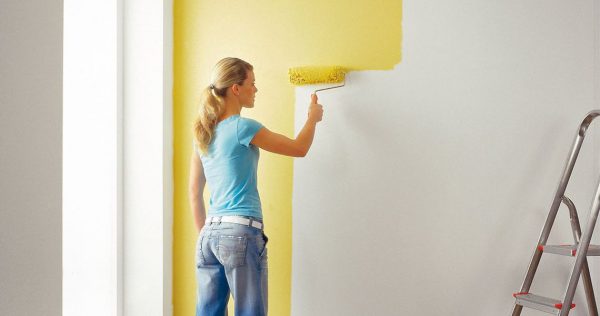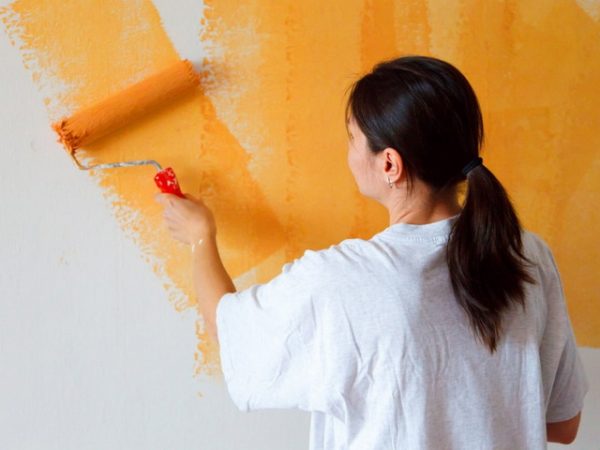To paint the surface using modern application tools and materials, you should know in advance how professionals in their field get rid of possible mistakes. Check out the most common miscalculations in order to effectively use your personal time and do the job as efficiently as possible.
- Underestimation of workload and lack of paint
- Unprepared surface
- Wet walls
- Primer rejection
- Refusal of trial color
- Using the wrong tools
- The paint is too thin or thick.
- Excess paint on the roller or brush
- Strong pressing roller against the wall
- Uneven painting
- Painting "in different directions"
- Single coat painting
- Application of the second layer on dry paint
- Unsuitable weather and time of day
- Wrong color combination
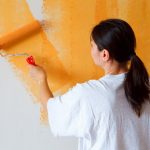
Underestimation of workload and lack of paint
It is recommended to stock up on paint in advance so as not to go to the store several times. Therefore, it is important to purchase paint in advance and for the future. It will come in handy when you have to cover up poorly stained places. Information on the bank should be read: the estimated coverage area is necessarily indicated there. Double the amount of paint if you plan to paint in two layers.
Unprepared surface
The negative result of painting can be affected by such factors as: dust, bristles from the brush, small defects of the walls themselves. To avoid additional expenses, it is necessary to prepare the site: walk along the surface with a grinding product, and then remove excess dust and stains. It is worth remembering: with an unprepared surface, the total cost of work can significantly increase, so it is better to take the necessary actions in advance.
to contents ↑Wet walls
The surface prepared for painting should be absolutely dry. If this is not done, the paint will simply peel off, and in places of moisture accumulation, bloating can form, which will adversely affect the appearance of the finished wall.
Primer rejection
The primer is primarily a grip on the paint. If you abandon this preparatory process, you can get an unpainted wall and an overuse of paint. The soil base must be selected high-quality, and applied in stripes from top to bottom, then from right to left. Only then can paint be used.
Refusal of trial color
It is very difficult to choose the right tone for the walls, especially if the surface needs to be entered into the corresponding room interior. It is recommended to add a coloring concentrate, thoroughly stirring the contents. To make sure the ratio is correct and not to allow differences in shades, apply paint in an inconspicuous corner and wait until the fragment dries.
to contents ↑Using the wrong tools
For painting, you need to purchase at least a few rollers and brushes in advance. You’ll sweep along the wall with the roller and paint over hard-to-reach spots with a brush. The brush should be with natural bristles - so there will be no villi on the wall. The roller for the first layer should be selected with a long pile, for subsequent layers a pile of up to 1 cm is enough.
The paint is too thin or thick.
With a good choice of paint, choosing the right shade is not difficult. It is important not to overdo it when diluted with water or solvent. Liquid diluted paint will not adequately cover the wall, thick - will leave lumps. For the correct selection, be sure to read the composition and find the necessary remedy. The paint must be mixed thoroughly. It is worth remembering that oil paint is diluted with a solvent, and aqueous emulsion paint is diluted with water.
to contents ↑Excess paint on the roller or brush
Keep in mind that with an excess of paint on the roller or brush on the surface, smudges can occur, and then the coloring of the wall sections will be uneven.
Strong pressing roller against the wall
Too much pressure on the tool leads to uneven coloring, especially when applying excessive amounts of paint. The main rule is not to press very hard, and then the process will go much better.
Uneven painting
The speed and inaccuracy of applying the paint will not be useful, traces of the tool will be visible. To avoid this, apply layers of paint one after another and paint the entire surface at once, without interruption.
to contents ↑Painting "in different directions"
Do not hope that when painting in different directions, you can achieve a result. Paint the wall in one of the selected directions. You can cover the first layer vertically and the second horizontally.
to contents ↑The correct technology of work implies that you must not stray from the course until the end of work. The alternation of directions in layers and careful attention to painting will give a qualitative result.
Single coat painting
For applying an intense shade, it is recommended to paint in several layers. The first layer will just distribute the paint on the surface of the wall, the subsequent ones will form a common color and fill in the small sections of the wall that were missed during the first painting.
to contents ↑Application of the second layer on dry paint
In the process of painting the wall, rush is definitely not needed. If you apply a second coat on a still damp paint, the painted areas will begin to come off and stick. To avoid such improper actions, it is important to wait a while and only then continue to perform work. You can additionally view the information on the can of paint. There will probably be written about the drying time.
to contents ↑Unsuitable weather and time of day
The hit of bright sunlight on the surface of the painted wall is fraught with the fact that the layer dries before the uniform distribution occurs. Excessive natural room light may cause the paint to foam. The best time to do the work is morning or afternoon, at which time direct sunlight will not hit the wall.
to contents ↑It is also necessary to take into account the room temperature: twenty degrees Celsius is considered favorable, relative humidity is 50%, 20–30% - at the height of the heating season.
Wrong color combination
With the right selection of shades, you can achieve a unique image of the interior. Before painting, study color combination schemes, pay attention to the so-called triads - combinations of three layers, the composition of which in any layout looks attractive. The tetrad is also popular - a combination of four colors. With the help of these techniques you can get interesting shades, and only the final result depends on you. It is also worth remembering about some combinations of individual colors:
- white is combined with everything, but best of all - with red, black;
- red - with yellow, white, green, blue;
- pink - with brown, white, gray, olive and pale blue;
- orange - with light blue, purple, violet;
- yellow - with blue, purple, light blue, gray, black;
- green - with golden brown, orange, lettuce, yellow and brown;
- black, like white, is universal, it is best combined with orange, pink, white, yellow and red.
Even if all the rules are followed, there may be errors, it is necessary to gain experience and practice. You can paint an unnecessary piece of wood to look at the preliminary result. Avoid the described errors, and then a high result will not take long.

